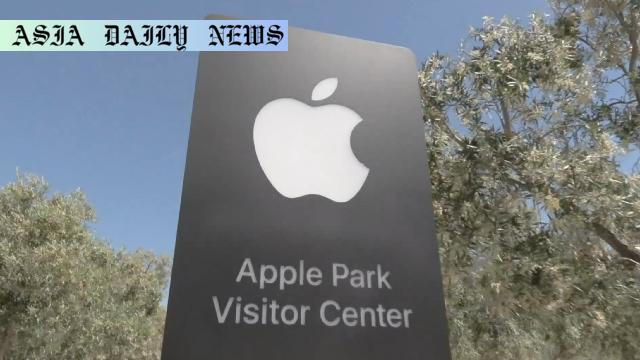iPhone production – Apple plans to move production of most U.S.-sold iPhones from China to India by 2026 to reduce dependency.

Apple’s Strategic Move to Mitigate Risks
In a major strategic shift, Apple has decided to relocate a significant portion of its iPhone production from China to India. According to reports from Britain’s Financial Times and other outlets, the tech giant aims to assemble all or most of its U.S.-sold iPhones in Indian factories by the end of 2026. The shift comes as a result of growing trade tensions between the United States and China, along with a desire to diversify its supply chain and mitigate risks associated with higher tariffs. Currently, approximately 80 percent of U.S.-sold iPhones are produced in China, reflecting Apple’s significant reliance on the country.
The Pressure of Tariffs and U.S.-China Trade Relations
The trade dispute between the United States and China has intensified over recent years, with the administration of President Donald Trump opting for additional tariffs on imports from China. Among these tariffs, a staggering 145 percent increase has been implemented, though smartphones and other electronic goods have thus far avoided these surcharges. However, further investigations into the security aspects of electronic imports suggest that smartphones and other devices may soon be targeted as well. Apple’s decision to move production is widely seen as a measure to reduce its reliance on China, considering that U.S.-China relations remain uncertain and restrictive trade policies continue to dominate.
Opportunities and Challenges with Indian Engagement
India presents strategic advantages for Apple’s production shift. The country’s expanding workforce, improving infrastructure, and growing economy make it an appealing alternative to China’s well-established manufacturing dominance. Moreover, India has encouraged foreign investment in recent years, particularly in its tech sector. However, moving production on such a large scale also poses challenges. Apple and its production partners will need to overcome potential supply chain disruptions, train local workers to meet the company’s exacting standards, and navigate different regulatory environments within India. Despite these hurdles, this move signifies a long-term investment in India’s growing influence in global production networks.
The Broader Context: Diversifying Supply Chains
Apple’s decision is emblematic of a broader industry trend. Major companies in the tech sector are increasingly looking for ways to diversify their production bases to manage geopolitical risks and ensure business continuity. The COVID-19 pandemic, coupled with ongoing uncertainties in U.S.-China relations, has underscored the risks of depending heavily on a single region for manufacturing. By moving more production to India, Apple not only mitigates these risks but also positions itself to tap into one of the world’s fastest-growing consumer markets.
Impact on U.S. Consumers and the Global Supply Chain
This move is expected to have significant implications for U.S. consumers, global trade relations, and Apple’s business strategy. For U.S. consumers, the shift in production may result in more consistent pricing as dependence on China lessens, especially if tariffs on electronic devices are imposed. For Apple, this decision solidifies its reputation as a forward-thinking company willing to adapt to shifting international dynamics. Globally, the shift highlights the evolving nature of supply chains in the face of geopolitical and economic pressures. India’s emergence as a technology manufacturing hub will likely accelerate as more companies follow Apple’s example, marking a new chapter in global tech production.
Commentary
Apple’s Bold Move Reflects Changing Global Dynamics
Apple’s decision to shift a significant portion of its iPhone production from China to India represents a thoughtful and strategic move that reflects the rapidly changing global economic and political landscape. Companies today face the need to adapt to geopolitical challenges, such as rising tariffs and trade restrictions, while ensuring the resilience of their supply chains. By choosing India, Apple is not only reducing its dependency on China but also taking a significant step towards diversifying its production.
Strategic Implications for India’s Growing Role
This decision will undoubtedly strengthen India’s position as a global manufacturing hub. As a country boasting a large workforce and an improving infrastructure, India is becoming increasingly attractive to multinational companies looking to diversify. Apple’s willingness to stake its production strategy on India by 2026 could inspire a ripple effect across industries, encouraging other major players to consider India as a viable manufacturing alternative to China. This moment is a milestone not only for Apple but also for India’s emergence in the global supply chain ecosystem.
Challenges Along the Path
However, this transition is not without obstacles. Apple must overcome barriers such as supply chain inefficiencies and workforce training in India. These challenges demand meticulous planning and execution, highlighting that such a bold move requires long-term commitment and collaboration with domestic stakeholders. Nevertheless, Apple’s history of overcoming operational challenges inspires confidence in its ability to successfully execute this transition.
Final Thoughts
As Apple moves forward with its plans, the world will watch closely to assess the broader impacts of this strategic decision. This shift could define Apple’s trajectory over the next decade and set the tone for how other companies approach supply chain resilience in an era of uncertainty. At the same time, it serves as an important reminder of the interconnected nature of technology, trade, and geopolitics in the modern world. Apple’s bold decision is as much a statement of its adaptability as it is of India’s growing relevance in the global economy.


